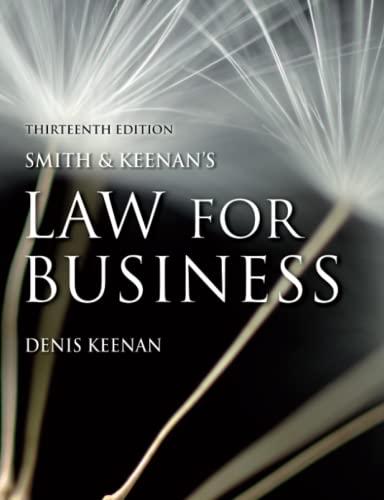Answered step by step
Verified Expert Solution
Question
1 Approved Answer
Using this case Link underlined below regarding the Marchand v Barnhill case fill in three rows on table with suggested response. Note: As many that
Using this case Link underlined below regarding the Marchand v Barnhill case fill in three rows on table with suggested response. Note: As many that can be filled out should be and as many of the columns as possible--some columns may not be relevant to the risk identified, OR the case may not set forth sufficient facts to allow you to fill out all of the columns.
Reference link mentioned above:
Marchand v. Barnhill, 212 A.3d 805 | Casetext Search + Citator


Step by Step Solution
There are 3 Steps involved in it
Step: 1

Get Instant Access to Expert-Tailored Solutions
See step-by-step solutions with expert insights and AI powered tools for academic success
Step: 2

Step: 3

Ace Your Homework with AI
Get the answers you need in no time with our AI-driven, step-by-step assistance
Get Started


